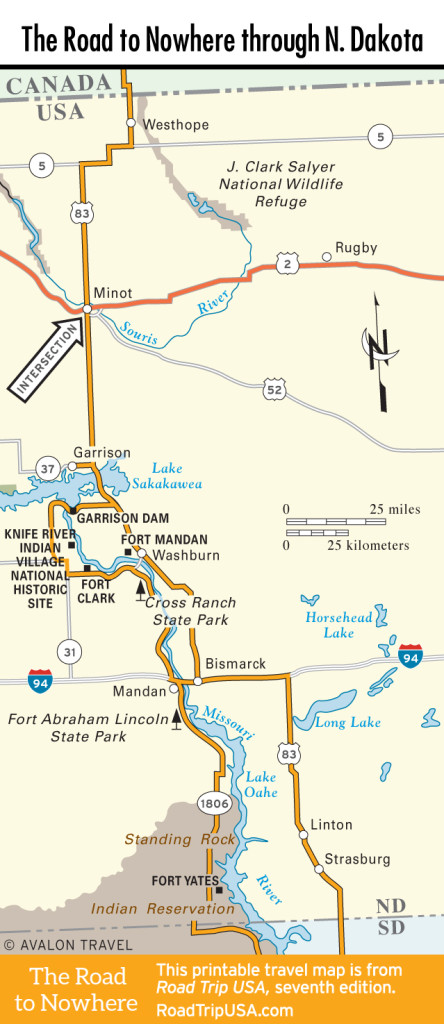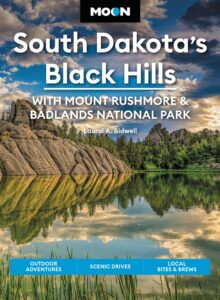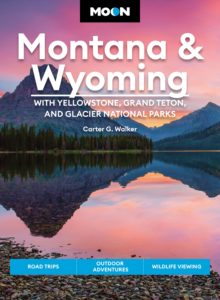Hwy‑1806 and Mandan
Hwy-1806
An outstanding alternative to US-83 between Bismarck and the South Dakota border is the narrow but well-maintained Hwy-1806, which meanders along the Missouri River taking in views of great hillocks and easy bluffs off to the left, and scintillating blue water ribboning beneath stark-white standing-driftwood trees. Round a bend and you’ll see a lagoon. Or admire a great panorama of 2,000-foot buttes to the west, all the way across the state line. Be sure to fill up on gas and supplies before you set off, since it’s a 100-mile (161-km) drive with few services along the way.
Mandan
Cross-river sibling to the state capital, Mandan (pop. 22,519) is a shipping and warehousing center that grew up swiftly in the years after 1882, when the Northern Pacific railroad completed a bridge from Bismarck. As John Steinbeck pointed out, Mandan marks the beginning of the wild western United States. For a quick trip back to the 1880s, when the Northern Pacific Railroad made its epic push across the Great Plains, visit the North Dakota State Railroad Museum (3102 37th St. NW, 701/663-9322, daily 1pm-5pm summer). In addition to a wide array of old railroad photographs, the museum includes restored cabooses, boxcars, tankers, and flatcars from the Soo, Great Northern, and Burlington Northern lines.
Most everything in Mandan, from cafés to beauty parlors, seems to be named after someone related to Lewis and Clark—apart from the string of windowless cowboy-themed beer bars along Main Street (choose among Silver Dollar Bar, the Last Call Bar, and a number of others). The other main things to see in Mandan are two statues. The first is a 25-foot-tall cottonwood carving of a Native American man, part of the Trail of the Whispering Giants, a series of sculptures by Hungarian artist Peter Wolf Toth that can be found in all 50 states. The other is the requisite Teddy Roosevelt,in front of the train station on Main Street.
Travel Map of the Road to Nowhere through North Dakota
















